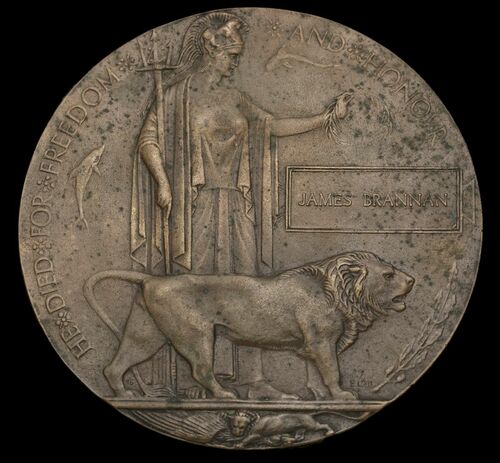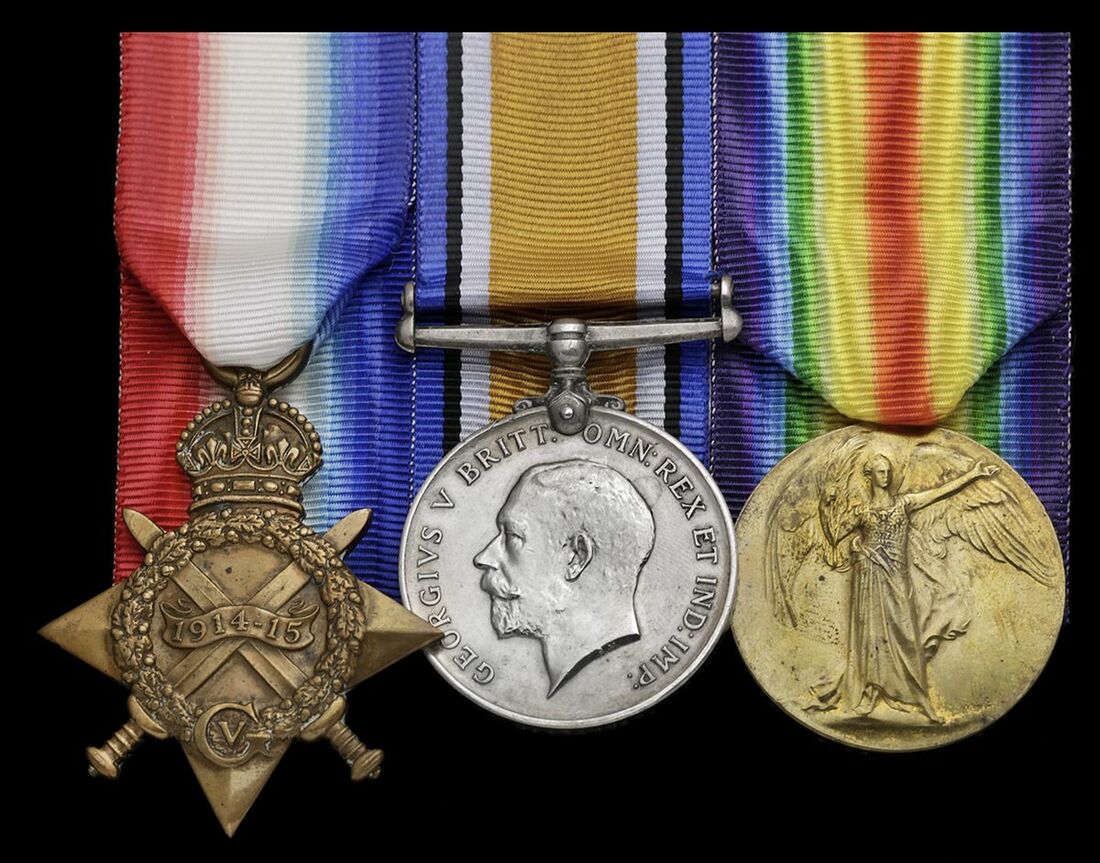Auction: 23001 - Orders, Decorations and Medals
Lot: 120
I struck away from the ship as hard as I could, and must have covered nearly 50 yards, when there was a big smash, and stopping and looking round the air seemed to be full of fragments and flying pieces. A large piece seemed to be right above my head, and acting on an impulse I dipped under to avoid being struck, and stayed under as long as I could, and then came to the top again, when coming behind me I heard a rush of water, which looked very much like a surf breaking on a beach, and I realised it was the suction or back-wash from the ship which had just gone. I hardly had time to fill my lungs with air when it was on me; I felt it was no use struggling against it, so I let myself go for a moment or two, then I struck out, but I felt it was a losing game, and remarked to myself mentally, "What's the use of you struggling, you're done," and actually eased my efforts to reach the top, when a small voice seemed to say "Dig out."
(The account of Petty Officer Ernest Benjamin Francis, one of just eighteen survivors of the titanic explosion which destroyed the Queen Mary during the Battle of Jutland)
The Tragic group of four awarded to Stoker Class I J. Brannan, Royal Navy, who was killed in the titanic explosion which destroyed the Battlecruiser Queen Mary killing all but eighteen of a crew of nearly 1,300
1914-15 Star (SS.112641. J. Brannan. Sto.1. R.N.) British War and Victory Medals (S.S. 112641 J. Brannan. Sto.1. R.N.); Great War Bronze Memorial Plaque (James Brannan), good very fine (4)
James Brannan was born at Lincoln on 24 August 1894 and enlisted as Stoker Class II on 28 August 1912. His first posting afloat was the Battleship H.M.S. Renown on 22 September. Seeing further service with Revenge and Albermarle he was finally posted to the Battlecruiser Queen Mary on 4 September 1913. Here Brannan was promoted to Stoker Class I on 6 November 1913.
He was still with her on the outbreak of the Great War, seeing action on 28 August 1914 at the Battle of Heligoland Bight. During this action the Battlecruisers sank two German Light Cruisers, the Coln and the Ariadne. Deployed again after the raid of 16 December 1914 she did not come into action at that stage.
When Admiral Beatty took the Battlecruiser Fleet to sea on 31 May 1916 Queen Mary joined them as part of the 1st Battlecruiser Squadron. The two fleets engaged first in what was called the 'Run to the South' as Hipper attempted to pull the British onto the guns of the High Seas Fleet. Closing to range Queen Mary - third in the British Line- opened fire on the Seydlitz, scoring two hits and disabling one of her aft turrets. She received two hits in exchange with little obvious effect at that stage before causing yet another to one of Seydlitz's secondary turrets.
At this point a number of heavy hits to Lion and Princess Royal caused a pall of smoke to rise which obscured the view for the gunners aboard the Derfflinger - in turn causing her to switch focus to Queen Mary. Queen Mary was now engaged with two of the enemy, still trading blows with Sedlitz. A shell from Derfflinger struck her forward at around 16:26, detonating one or both of her magazines. The resulting explosion tore her forward section to pieces and rolled her over, she sank almost immediately with the loss of 1,266 crewmen. As a Stoker, Brannan would have had no chance to escape, he was killed in the destruction of Queen Mary. He is commemorated upon the Portsmouth Naval Memorial; sold together with copied service papers and a Commonwealth War Graves certificate.
Subject to 20% VAT on Buyer’s Premium. For more information please view Terms and Conditions for Buyers.
Sold for
£420
Starting price
£210









